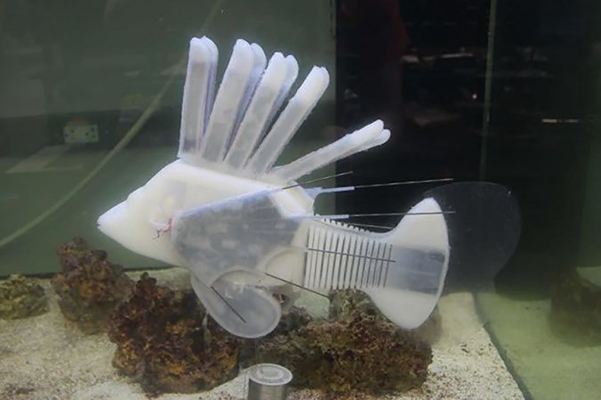Part of what makes human and animal bodies so efficient is the integrated multifunctionality of their parts: a leg is not just a mechanism for movement but also a place to store energy in the form of fat, and a home for long bones, which manufacture blood cells that transport energy elsewhere.
Robots tend to compartmentalize these tasks, separating functions like energy storage and motion. Having a different component for each function makes for bulkier devices that hinder robotic potential, especially in untethered robots that need to be lightweight but highly powered for use in long duration exploration or search and rescue missions.
James Pikul, an assistant professor in the Department of Mechanical Engineering and Applied Mechanics, has co-authored a recent paper in Nature with colleagues from Cornell University demonstrating a robotic lionfish that combines energy storage and movement through the use of a hydraulic liquid the team refers to as “robotic blood.”
“Normal robots are made of parts that are highly optimized for specific tasks. This specializing results in compromises in the robot performance,” says Pikul. “For example, if we want a robot to operate longer, we have to add more batteries, but to do so we must remove actuators to maintain the same weight and size.”
To address this trade-off conundrum, the team modeled their robotic blood off of redox flow batteries in which some battery components store energy in liquid form until it is converted to electricity using a chemical reaction when needed. In the researchers’ robotic lionfish, the synthetic vascular system stored energy in the robotic blood in a similar fashion to redox flow batteries, while energy extracted from the robot blood powered a pump that pushed the same hydraulic liquid to propel the fin’s movement.
Read more at Penn Engineering.








